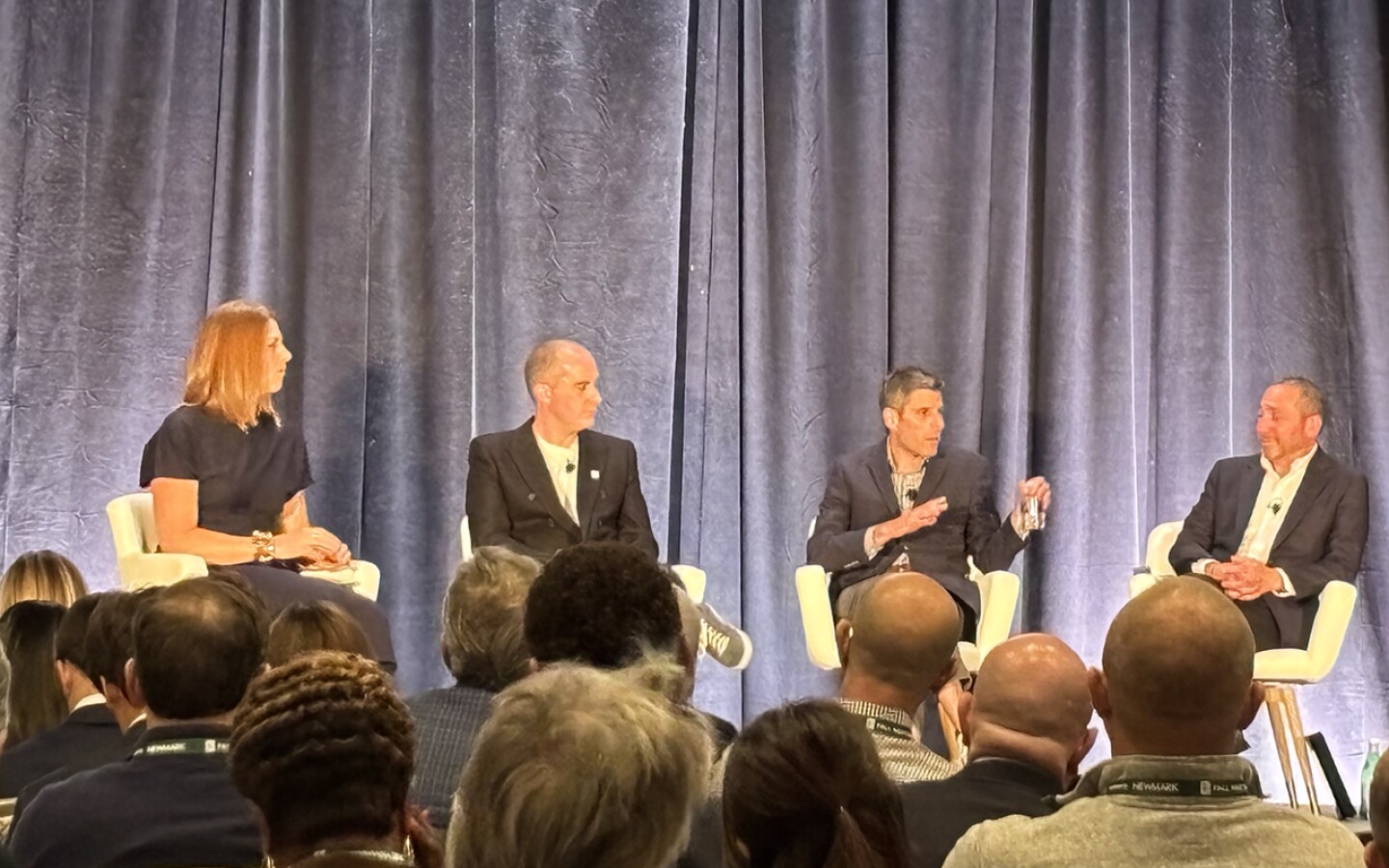
Leslie Taylor, global marketing director for Gensler moderated a panel that featured Steven Paynter, principal, global practice area leader: building transformation & adaptive reuse, Gensler; Mark Frankel, managing director, US commercial real estate syndications at BMO Harris Bank; and Todd Rechler, chief construction & development officer, RXR Realty.
ULI
Conversions of office buildings for residential uses are becoming increasingly viable in some regions. According to Steven Paynter, a principal at Gensler who leads the firm’s global building transformation and adaptive use practice, office-to-residential conversions are viable in 25–30 percent of the buildings his team analyzes.
Although such conversions are challenging to implement—often requiring complex capital stacks; specific floor plates, among other architectural details; and complicated public/private partnerships—they’re having a moment, according to Paynter and several panelists, who spoke during a 2024 ULI Fall Meeting session at Resorts World Las Vegas titled Survival of the Fittest: The Future of the Distressed Office Building. Conversions dominated the energetic back-and-forth. The panel was moderated by Leslie Taylor, global marketing director at Gensler.
Conversions sit at the nexus of three major realities in many cities around the globe: high office vacancy rates, which have downstream impacts, housing shortages, and a biosphere that’s warming—causing, in some cases, urban heat islands.
“Particularly in the office asset class, you have contractual lease payments that last a long time. ... I’ve heard it described as a slow falling knife,” said Mark Frankel, managing director, U.S. commercial real estate syndications at BMO Harris Bank. “There are leases that are coming to due. [Loans] are coming to due, and lenders are being forced to deal with it now.”
Governments increasingly favor conversion incentives that reduce these threats, according to Todd Rechler, chief construction and development officer at RXR Realty, who said that his firm that has completed about $1.6 billion worth of redevelopment and about $120 million worth of repositionings within Manhattan.
“We look at the [conversion of office properties] as a great opportunity,” said Rechler, who pointed to favorable timing in the market for these conversions, with an office market softening alongside increasing housing demand. “The time is right to actually start taking some of these assets and converting them, [finding] the next highest use for that asset.”
The National Bureau of Economic Research tallied 311 office buildings that are candidates to be converted to residential in New York City alone, “which just furthers our concept here,” Rechler said.
Many office buildings won’t achieve that basis, and knowing if they can requires learning everything—conversion policies where the building is located, its physical footprint, whether its existing systems can be reused . . . . “This is about finding the right buildings to convert,” Paynter said.
It all comes down to the basis
Whether a conversion is viable “all comes down to the basis,” Rechler said. “Ultimately, there’s a level of adjusting the capital stack . . . to do a conversion.”
In such high-rent markets as New York City—ones that also have favorable conversion policies—conversion math pencils out.
In these markets, the cost of conversion can be lower than the cost of “re-tenanting assets, brokerage [fees], leasing commissions, [tenant improvement costs], and the free rent in the downtime . . . especially [for] B and C assets,” Rechler said. It helps if the existing structure works for the converted use, which provides significant carbon and cost savings, he added.
Paynter said he developed an algorithm for scoring criteria that can determine whether a given office building is suitable to convert, which can drastically shorten the evaluation process. The algorithm issues a grade based on such factors as window size, floor plates, humidity, elevators, and parking.
“If you’ve got 35 feet [11 m] for the window, then, amazing,” Paynter said. “ That’s going to score really well.”
Local incentives matter
Rechler noted that the building basis for an office-to-residential conversion depends largely on the policies that apply in the locale of the building site. “New York City [recognizes] that [there need to be] policies [in] place to support building more housing,” he said.
New York City’s Local Law 97, passed in 2019 to reduce carbon emissions, indirectly incentivizes office-to-residential conversions, according to Rechler.
He also pointed to a New York state rule—Real Property Tax Law Section 467-m, also known as the Affordable Housing from Commercial Conversions Tax Incentive Benefits program—that directly offers tax incentives for converting nonresidential buildings to residential use. The program provides up to a 90 percent property tax exemption for as long as 35 years.
Chicago, Denver, and Boston are among the U.S. cities that have introduced conversion incentive programs. The city of Calgary, in Canada’s Alberta province, took more drastic action to relieve its housing shortage. Paynter and his team at Gensler were commissioned by the city to assess vacant office buildings there. Gensler’s findings contributed to the development of the Downtown Development Incentive Program, which provides developers with CA$75 per square foot in incentives for implementing office-to-residential conversions downtown.
“They were the first movers to do that in North America,” Paynter said. “It was easy to apply for [and to] implement. It’s a great case study for what [the real estate industry] and our clients can [do to] help push cities towards [incentivizing conversions], because it has a genuine impact.”
According to Paynter, growing numbers of developers and banks are partnering with governments “to try [to] get money out, try [to] get incentives flowing, [and] try [to] figure out how to get the capital stack to work with these projects.”
“What this means is that every deal we look at, every time we go and try to design a building, we have to have about 10 times the number of people involved,” he said. “It becomes a more complicated conversation [with] a lot more educating [to] break it down to [public officials].”
Related reading:

